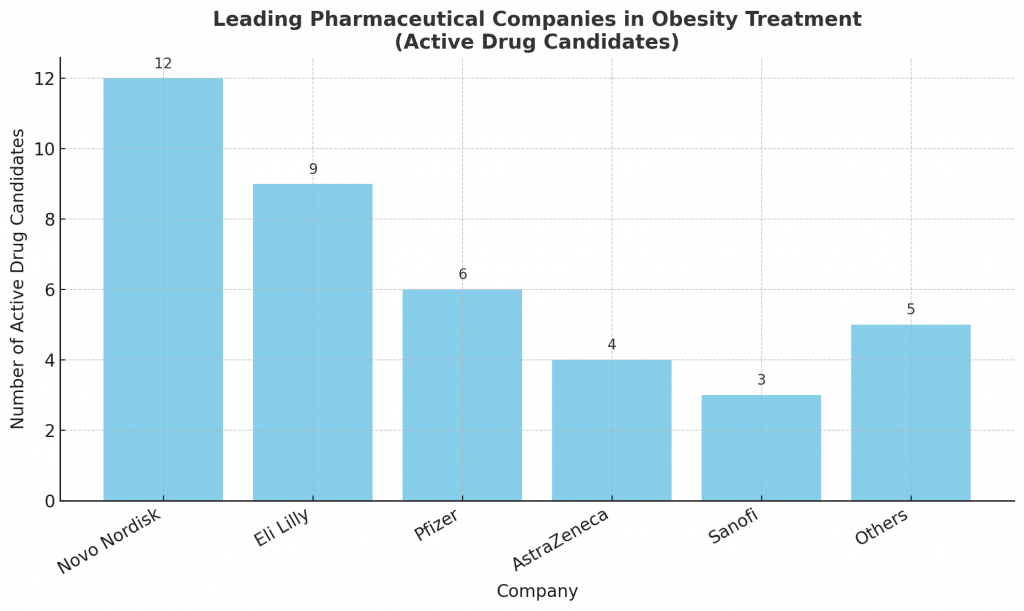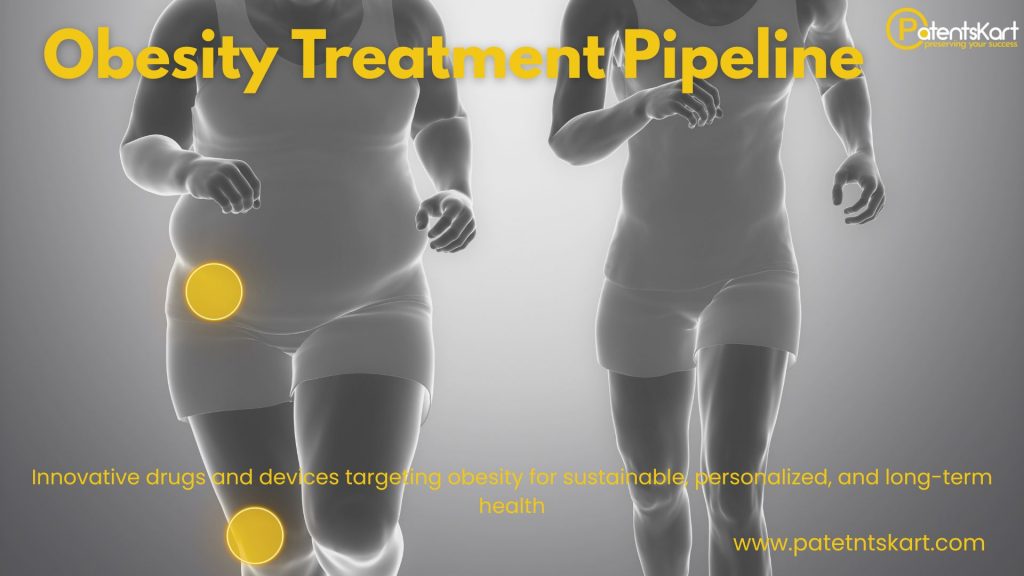What is Obesity Treatment and Why is it Important Today?
Obesity treatment has become one of the most pressing healthcare priorities of our time. With global obesity rates climbing year after year, the demand for effective therapies is stronger than ever. The World Health Organization (WHO) estimates that more than a billion people worldwide are obese, creating a serious burden on healthcare systems and increasing risks of diabetes, heart disease, hypertension, and even certain cancers.
So, why is it so important today? Because it is no longer just about weight loss—it is about survival, long-term health, and sustainable well-being. From medications that regulate appetite to advanced medical devices and behavioral interventions, the obesity treatment landscape is rapidly transforming. A few years ago, weight management solutions were limited to lifestyle advice and invasive surgeries. Today, with breakthroughs in drug development and biotechnology, obesity treatment is entering a new era where precision, personalization, and innovation dominate.
What Are the Current Options Available for Obesity Treatment?
Let’s break it down into the main categories:
1. Lifestyle and Behavioral Interventions
- Diet and exercise remain the cornerstone of obesity treatment.
- Behavioral therapies focus on modifying eating habits, stress management, and long-term adherence.
2. Pharmacological Therapies
- Drugs such as GLP-1 receptor agonists (e.g., semaglutide) have shown impressive results in weight reduction.
- Other medications work by targeting appetite regulation in the brain or altering metabolic pathways.
3. Bariatric Surgery and Medical Devices
- Intragastric balloons, gastric bypass, and sleeve gastrectomy are effective but invasive options.
- Newer devices like vagus nerve stimulators provide less invasive alternatives.
4. Emerging Non-Drug Interventions
- Endoscopic sleeve gastroplasty (ESG) and neuromodulation devices represent minimally invasive methods.
- Digital health tools and wearables are beginning to play a role in monitoring and guiding patients.
How is the Obesity Treatment Pipeline Evolving in 2025?
The obesity treatment pipeline in 2025 is more dynamic than ever before. Major pharmaceutical companies and biotech startups are racing to develop next-generation therapies. Here are the key trends:
- Incretin-Based Therapies: GLP-1, GIP, and glucagon receptor agonists are leading the charge. These hormonal modulators are designed to control appetite, improve glucose regulation, and reduce body weight.
- Oral Small Molecules: Once dominated by injectables, the obesity treatment pipeline now includes oral formulations that increase patient convenience and compliance.
- CNS-Acting Drugs: Central nervous system drugs target hunger signals in the brain, tackling obesity at its neurological roots.
- Devices and Non-Drug Interventions: Innovative devices such as intragastric balloons, neuromodulators, and smart implants like the ROGUE bioelectronic device are shaping the non-pharmaceutical landscape.
Which Pharmaceutical Companies Are Leading in Obesity Treatment?

When asking who the leaders in obesity treatment are, a few names dominate the space:
- Novo Nordisk: Known for its blockbuster semaglutide (Wegovy, Ozempic), the company continues to invest heavily in incretin-based drugs and next-gen therapies.
- Eli Lilly: With tirzepatide (Mounjaro/Zepbound), Eli Lilly has captured attention by delivering superior weight loss results.
- Pfizer: Although Pfizer halted some programs like danuglipron, it remains a strong contender in oral obesity treatments.
- AstraZeneca and Sanofi: Both are reinvesting in metabolic research and collaborating with biotech firms.
- Startups like Rhythm Pharmaceuticals, Viking Therapeutics, and Structure Therapeutics: These smaller players are carving niches with innovative approaches to rare obesity syndromes and oral therapies.
What Role Do Patents Play in Obesity Treatment Innovation?
Patents are the backbone of innovation in obesity treatment. They not only protect new drugs and devices but also shape competition and investment in this high-growth market.
- Patent Filings by Big Pharma: Companies like Novo Nordisk and Eli Lilly dominate patent filings related to incretin-based therapies.
- Emerging IP Strategies: Smaller biotechs are leveraging patents for oral GLP-1s, amylin analogs, and microbiome-based therapies to secure funding and partnerships.
- White-Space Opportunities: Areas like gut microbiome regulation and bioelectronic implants are relatively less crowded, giving room for new patent activity.
- Patent Expiry: Older drugs are nearing expiration, creating openings for generics and biosimilars. However, next-gen formulations are quickly being patented to extend exclusivity.
How Could New Technologies Change the Future of Obesity Treatment?
Obesity treatment is no longer just about pills or surgeries. Cutting-edge technologies are redefining what’s possible:
- AI-Driven Personalization: AI can analyze patient genetics, microbiome data, and lifestyle factors to tailor treatments.
- Smart Drug Delivery Systems: Bioelectronic implants and controlled-release oral formulations ensure precise, on-demand treatment.
- Wearables and Digital Health Tools: These help track patient progress in real time, improving long-term adherence.
- Synthetic Biology Therapies: Engineered cells capable of producing hormones like GLP-1 in vivo could revolutionize treatment.
What Are the Major Challenges in Obesity Treatment Today?
Even with rapid progress, obesity treatment faces several challenges:
- Accessibility and Cost: Many of the newest obesity drugs are expensive and not widely available in low-income regions.
- Adherence Issues: Patients often discontinue treatment due to side effects or long-term fatigue.
- Safety Concerns: Questions remain about the long-term safety of incretin-based therapies.
- Regulatory Barriers: Approvals can be slow, and insurers may not cover certain treatments.
What Are the High-Value Applications of Obesity Treatment Innovations?
Obesity treatment innovations extend far beyond weight loss. Here’s how they add value:
- Precision Medicine: Tailored treatments based on genetic and biomarker profiles improve efficacy and reduce side effects.
- Comorbidity Management: Advanced obesity treatment reduces the risk of diabetes, hypertension, and cardiovascular diseases.
- Healthcare Cost Reduction: By preventing chronic diseases, this saves billions in healthcare costs.
- Global Health Equity: Affordable, scalable obesity treatments can close care gaps in underserved communities.
What Conferences and Events Are Shaping the Future?
Conferences and symposia play a huge role in advancing the treatment of obesity. Some key events include:
- Innovation in Obesity Therapeutics Summit (San Diego, 2024)
- 2nd GLP-1-Based Therapeutics Summit (Boston, 2025)
- Obesity: Next Medicines with Impact (Miami, 2025)
- Weight Management Summit (San Diego, 2025)
- International Conference on Obesity, Metabolism (Rome, 2025)
FAQ
1. What is the most effective obesity treatment today?
Currently, GLP-1 receptor agonists like semaglutide and tirzepatide are considered the most effective pharmaceutical options, combined with lifestyle changes.
2. Are there new obesity treatments coming soon?
Yes, oral small molecules, dual and triple agonists, and digital therapeutics are expected to gain traction in the next 5–10 years.
3. Is obesity treatment covered by insurance?
Coverage varies by country and provider. In many regions, insurers are beginning to cover newer drugs due to their effectiveness in reducing long-term healthcare costs.
4. Can patents affect patient access to obesity treatment?
Yes, patents can delay the entry of generics, keeping prices high. However, they also incentivize innovation in this critical healthcare field.
5. What are the potential side effects of obesity treatment drugs?
Most modern obesity treatment medications are safe when prescribed correctly, but some may cause nausea, gastrointestinal discomfort, or fatigue. Long-term monitoring is recommended to ensure safety.
How Can PatentsKart Help?
At PatentsKart, we specialize in guiding companies through the complex patent landscape of obesity treatment. Here’s how we can help:
- Patent Landscape Analysis: Identify key assignees, filing trends, and competitive gaps.
- Patent Filing and Prosecution: Secure strong IP protection for new obesity drugs, devices, and digital tools.
- Competitive Intelligence: Monitor competitor filings to anticipate market moves.
- White-Space Identification: Pinpoint under-patented areas for strategic innovation.
- Global IP Strategy: Support multi-country filings and align IP with commercialization goals.
For biotech startups, pharma companies, and investors, our expertise ensures that obesity treatment innovations are fully protected and positioned for success.
Conclusion – What is the Future?
The future of obesity treatment is bright and transformative. From incretin-based therapies to smart implants and AI-driven personalization, the industry is shifting from one-size-fits-all solutions to highly tailored, patient-friendly approaches. Patents will continue to be a driving force, shaping competition, exclusivity, and investment in this multi-billion-dollar market.
As the obesity crisis grows, so does the opportunity for innovation. Companies that invest in research, IP strategy, and patient-centric solutions will define the next decade of healthcare.
To explore how your organization can protect and grow its innovations, visit www.patentskart.com or contact us at info@patentskart.com.







